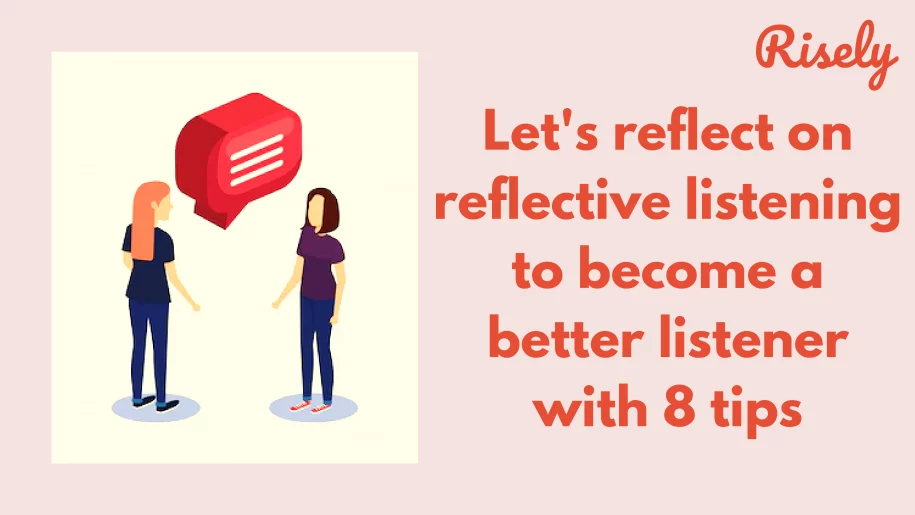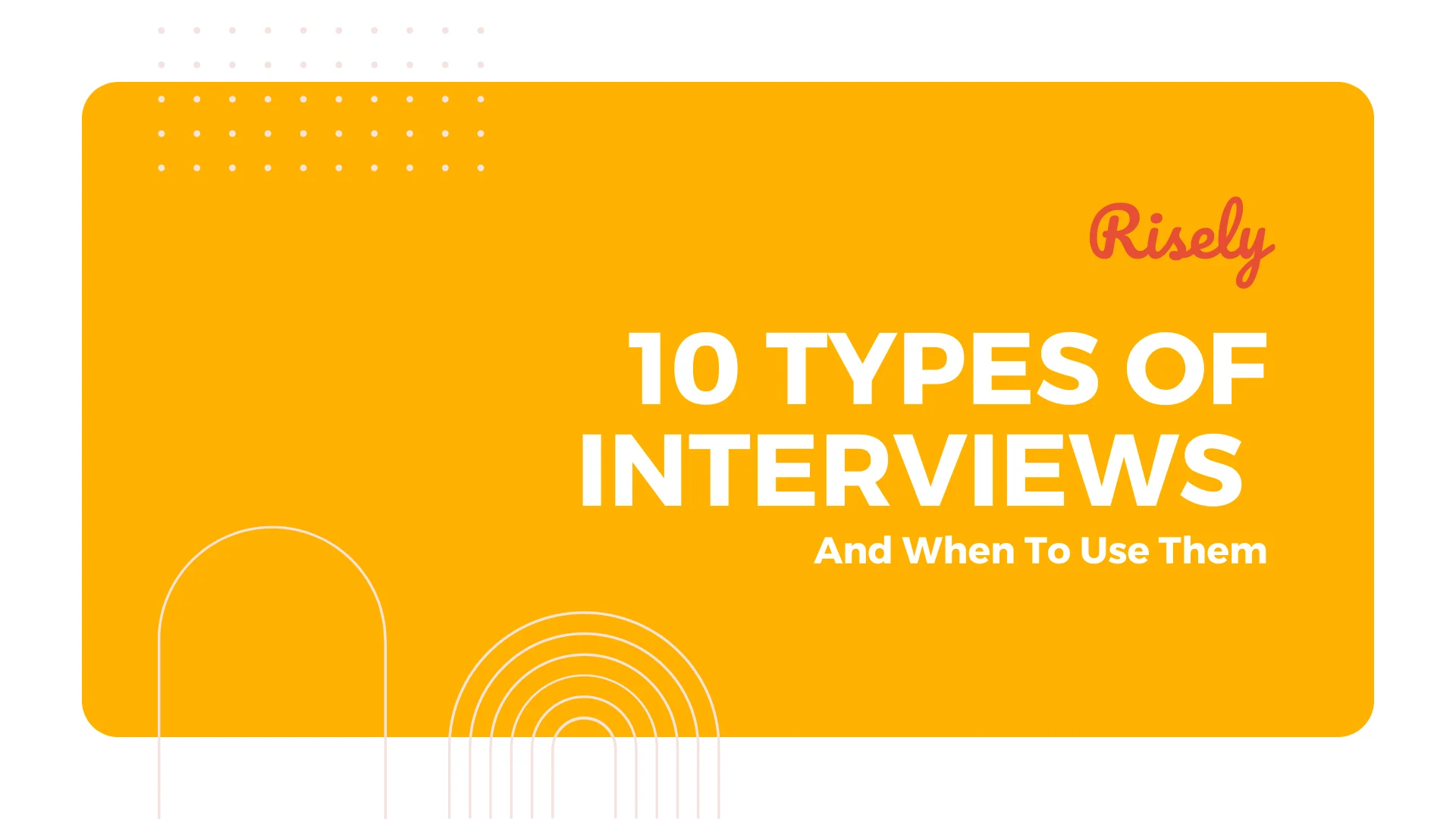Let’s Reflect on Reflective Listening to Become a Better Listener with 8 Tips
Have you ever been in a conversation where you felt like the other person wasn’t listening to what you were saying? Perhaps they were just waiting for their turn to speak or checking their phone while you talked. This can be frustrating and make you feel unheard. That’s where reflective listening comes in. It is an essential communication skill that can help build empathy and trust. It involves actively listening to what the other person is saying and then reflecting on what you heard to show that you understand their point of view. In this blog, we will explore the importance of reflective listening, it’s three stages, and how it differs from active listening. We will also provide practical tips on building your reflective listening skills and examples of how to use them in your daily interactions.What is Reflective Listening?
Reflective listening is carefully listening to the speaker and accurately repeating what they just said. It requires active attention and the use of verbal and nonverbal responses, such as nodding eye contact, and facial expressions. This type of listening is a valuable tool for preventing conflict within a group, as it facilitates better communication and mutual understanding. When practicing this skill, reflective listeners must use open body language and direct eye contact. Two main techniques for practicing reflective listening are mirroring and paraphrasing. It aims to draw out the speaker’s answers by rephrasing and asking questions, making it an essential communication skill for effective listening and improved relationships.Importance of Reflective Listening
Reflective listening is an essential component of effective communication. In reflective listening, the listener mirrors the speaker’s words and feelings, indicating that they understand and empathize with the speaker’s perspective. This creates a safe space free from distractions, where the listener can offer support and encouragement. Active listening skills are fundamental to reflective listening. Active listeners pay close attention to what the speaker is saying, take the time to understand their perspective, and ask clarifying questions when needed. This approach helps to create a positive and productive dialogue. Check out “20 Active listening questions to help you become a better listener“ Reflective listening in group discussions can improve communication and prevent conflicts. When group members listen reflectively to one another, they can better understand one another’s perspectives and find common ground. Reflective listening techniques involve mirroring and paraphrasing, which help reinforce the listener’s understanding of the speaker’s perspective.What are the Three Stages of Reflective Listening?
Reflective listening involves attending and reflective skills and has three stages: repeating, paraphrasing, and reflecting feelings. It is a valuable tool to improve communication by allowing the listener to understand the speaker’s thoughts and emotions fully.- Repeating: The first stage involves repeating or paraphrasing what the speaker has said to show that you are actively listening and trying to understand their perspective. This stage helps ensure you have correctly understood the speaker’s message.
- Recognizing emotions: The second stage involves recognizing and acknowledging the speaker’s feelings. This means paying attention to their tone of voice, body language, and facial expressions to understand their feelings. Acknowledging their emotions can help the speaker feel heard and validated.
- Responding: The third stage involves responding to the speaker in a way that shows empathy and understanding. This may include summarizing their message, acknowledging their emotions, and offering support or encouragement. Responding effectively builds rapport and trust between the listener and the speaker.
Other Interesting Reads
Active Listening versus Reflective Listening
How to Build Skills for Listening Reflectively
Listening reflectively involves attentive and reflective skills that allow individuals to perceive a speaker’s viewpoint without judgment or interruption. Here are some tips to help you become a reflective listener:- Pay attention: Give the person speaking your full attention. Focus on what they say, and avoid getting distracted by your thoughts or the environment.
- Use nonverbal cues: Use nonverbal cues such as nodding, maintaining eye contact, and using appropriate facial expressions to show that you are listening and engaged.
- Avoid interrupting: Avoid interrupting the speaker or finishing their sentences. Instead, let them finish their thoughts before responding.
- Paraphrase: Repeat back what the person has said in your own words to demonstrate that you have understood their message. Use phrases like “What I hear you saying is…” or “It sounds like you are saying….”
- Clarify: Ask questions to clarify any points that you are unsure about. Avoid assuming that you know what the person is trying to say.
- Validate: Show empathy and understanding by acknowledging the speaker’s feelings and emotions. For example, you can say things like, “I can understand why you would feel that way,” or “That sounds really frustrating.”
- Summarize: Summarize the conversation’s main points to ensure you have understood the message correctly. This also helps in moving the conversation forward.
- Practice: Reflective listening is a skill that takes time to master. Try to incorporate these tips into your everyday conversations, and seek feedback from others to improve your skills.
Reflective Listening Examples
- During a meeting: Reflective listening can be used to ensure everyone feels heard and understood. For example, if a colleague expresses their concerns about a project, you can paraphrase their points to confirm that you know what they are saying. This will help them feel validated and encourage them to continue sharing their thoughts.
- In a performance review: When conducting a performance review, use reflective listening to show that you genuinely listen to your employee’s feedback. Repeat back what they have said to make sure you have understood their perspective. This will help you identify areas where they may need support and build a stronger working relationship with them.
- During a difficult conversation: Listening reflectively is also helpful during difficult conversations, such as when an employee is unhappy with their work or has a problem with a colleague. Active listening can help defuse the situation and show that you take their concerns seriously. In addition, you can use it to validate their feelings and help them feel heard.
- In a brainstorming session: In a brainstorming session, reflective listening can help generate new ideas and encourage collaboration. For example, when a colleague presents an idea, paraphrase it back to them to clarify your understanding. This will help them feel valued and encourage them to build on their ideas.
- In customer service: Reflective listening ensures customers feel heard and understood. When a customer presents a problem or concern, repeat their issue back to them to confirm that you have understood their situation. This will help you provide better solutions and build stronger customer relationships.
Conclusion
In conclusion, listening reflectively is not just about hearing someone out but also understanding and empathizing with them. Reflective listeners help create a safe, open, and non-judgmental environment where both parties can easily communicate. By being an active and reflective listener, you develop deeper connections with people and cultivate relationships based on understanding, trust, and respect. Refining your listening skills may take time, effort, and practice, but it’s worth it. Sign up for Risely to learn more about active listening, communication, and related content to become a better manager.Unlock secrets to mastering active listening with a free toolkit.
Get the free active listening toolkit for managers to start the journey toward professional success.
FAQs
What are the skills for reflective listening?
The four skills for listening reflectively are:
– Actively listening to the speaker
– Paraphrasing or summarizing the speaker’s message
– Checking for understanding or clarifying the speaker’s message
– Providing feedback to the speaker
– Actively listening to the speaker
– Paraphrasing or summarizing the speaker’s message
– Checking for understanding or clarifying the speaker’s message
– Providing feedback to the speaker
What are reflective listening and empathy?
Listening reflectively is a communication technique where the listener shows empathy by actively listening to the speaker, summarizing what was said, and checking for understanding. Empathy is the ability to understand and share the feelings of another person, and it is a crucial aspect of reflective listening.
What is the difference between listening reflectively and affirmation?
The difference between reflective listening and affirmation is that listening reflectively focuses on summarizing and clarifying the speaker’s message to show understanding. In contrast, affirmation involves acknowledging the speaker’s emotions or feelings without necessarily summarizing the content of their message. An affirmation can offer support and validation of the speaker’s emotions, while reflective listening is more focused on understanding the content of the message.
Other Related Blogs
10 Types of Interviews Every Hiring Manager Should Know
10 Types of Interviews Every Hiring Manager Should Know Interviews are a crucial part of the job search process, as they provide an opportunity for hiring managers to assess potential…
Performance Management Training: Empowering Managers To Manage Better
Performance Management Training: Empowering Managers To Manage Better Remember that feeling of dread when you knew performance review season was rolling around? Yeah, us, too. For many employees, performance reviews…
Leaders Who Don’t Listen Often Fail. Here’s 5 Reasons Why
Leaders Who Don’t Listen Often Fail. Here’s 5 Reasons Why Leadership is a complex and dynamic role that requires a diverse set of skills and qualities. While many attributes contribute…
Grooming for Management: The Key to Building a Sustainable Leadership Pipeline
Grooming for Management: The Key to Building a Sustainable Leadership Pipeline Imagine a crucial leadership position opening up in your organization. You scramble to fill the role, internally and externally,…


